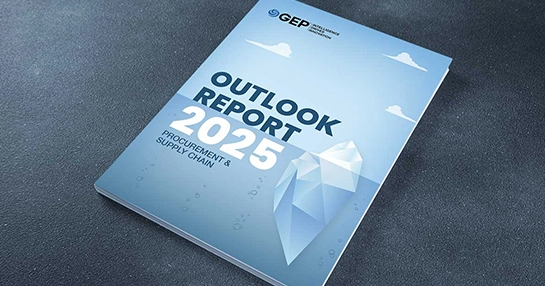
Enhancing Spend Analytics with AI: What Procurement Teams Need to Know
- AI streamlines spend analytics by automating data cleanup and categorization tasks.
- It identifies trends, risks, and savings opportunities through advanced data analysis.
- Used strategically, AI empowers teams to focus on value-driven procurement outcomes.
February 05, 2025 | Spend Management
Picture this: Your spend data is growing by the day—spreadsheets, ERP systems, and countless invoices piling up faster than your team can analyze them. You know there could be hidden cost-saving opportunities in there, but finding them feels like hunting for a needle in a haystack. That’s where artificial intelligence (AI) can help. AI isn’t magic, and it won’t solve every spend-related challenge overnight. But when it’s set up correctly, it can give you a sharper view of your spending patterns and help your team focus on decisions that matter.
Spend analytics used to be about collecting data and running basic reports. You’d get a historical view of what was spent, with whom, and when. Now, thanks to AI, you can dig deeper. AI can process large volumes of data faster and highlight anomalies or trends you might otherwise miss. It can do the heavy lifting of categorizing spend, flagging outliers, or predicting future risks.
Automating Data Processing for Efficiency
One of the most time-consuming aspects of spend analytics is data cleanup and categorization. Teams spend hours reconciling invoices, standardizing supplier names, and manually classifying spend across multiple systems. AI can automate these tasks, reducing manual effort and improving accuracy.
For example:
● Invoice Matching
AI algorithms can cross-reference purchase orders, receipts, and invoices to flag mismatches, such as quantity or price discrepancies. This reduces payment errors and speeds up reconciliation.
● Spend Classification
AI uses historical data to suggest spend categories, such as classifying a software subscription under “IT” or “professional services.” This significantly reduces manual effort and improves consistency.
● Data Enrichment
AI can pull missing details—like DUNS (Data Universal Numbering System numbers), ESG ratings, or supplier risk scores—from public sources, creating a more complete view of your spend data.
AI doesn’t eliminate the need for clean data, but it can help you get there faster. By automating repetitive tasks, it frees your team to focus on analysis and strategy.
Uncovering Hidden Patterns with AI-Driven Analysis
Traditional spend reports tell you what happened in the past, but AI helps you understand why it happened—and what might happen next. By analyzing spend data alongside external factors like market trends, supplier performance, and currency fluctuations, AI uncovers patterns and correlations that might otherwise go unnoticed.
Here’s how it works in practice:
● Root-cause Analysis
If raw material costs spiked 15% last month, AI can correlate this with supplier delays, tariff changes, or even weather disruptions, helping you identify the root cause.
● Real-time Alerts
AI monitors transactions as they happen, flagging off-contract purchases or unusual spending patterns before invoices are paid. This enables faster compliance checks and corrective actions.
● Scenario Modeling
AI can simulate outcomes based on historical data and market variables. For example, “What if fuel prices rise 10%?” or “How would a supplier bankruptcy impact costs?” These models provide a data-driven foundation for decision-making.
AI’s insights are only as good as the data it’s trained on. While it can’t predict black swan events, it’s a powerful tool for speeding up analysis and surfacing actionable insights.
Enhancing Spend Visibility and Control
One of the biggest challenges in spend analytics is achieving full visibility into your spend. Tail spend, maverick spend, and unclassified transactions can obscure your view, making it difficult to identify savings opportunities or compliance risks. AI helps by enhancing spend visibility and control.
For instance:
● Tail Spend Analysis
AI can identify and categorize low-value, high-volume transactions that often fall through the cracks. This helps you uncover savings opportunities and negotiate better contracts.
● Maverick Spend Detection
AI monitors transactions in real time, flagging off-contract purchases or unauthorized spending. For example, if someone buys IT hardware outside of approved channels, AI alerts you before the invoice is paid.
● Spend Consolidation
AI identifies opportunities to consolidate spend across business units or categories, enabling better supplier negotiations and cost savings.
How to Integrate AI into Your Spend Analytics
AI isn’t a plug-and-play solution, but with the right approach, it can deliver significant value. Here’s how to get started:
● Start with Clean Data
AI’s effectiveness depends on the quality of your data. Audit your spend data, supplier databases, and contract repositories to ensure they’re accurate and up-to-date.
● Focus on Specific Use Cases
Don’t try to do everything at once. Pilot AI for targeted tasks, such as invoice matching, tail spend analysis, or maverick spend detection. Measure the results and scale gradually.
● Choose the Right Tools
Look for AI solutions that integrate with your existing systems (e.g., ERP) and offer transparency. Can the tool be customized to your needs?
● Keep Your Team Involved
AI is a tool, not a replacement for human expertise. Train your team to interpret AI-generated insights and validate outputs. For example, if AI flags a transaction as maverick spend, have your team review the context.
● Iterate and Improve
AI models improve over time with feedback. Regularly review their performance and refine them based on your team’s input.
The Bottom Line
AI isn’t here to replace your spend analytics team — it’s here to support them. By automating repetitive tasks, uncovering hidden patterns, and enhancing spend visibility, AI can make spend analytics faster, smarter, and more efficient.
The key is to approach AI with clear goals and realistic expectations. Start small, focus on specific pain points, and involve your team every step of the way. When used strategically, AI is a practical tool that can help your team deliver greater value to the business. So, ignore the hype, focus on the results, and let AI do what it does best: make your spend analytics easier.



